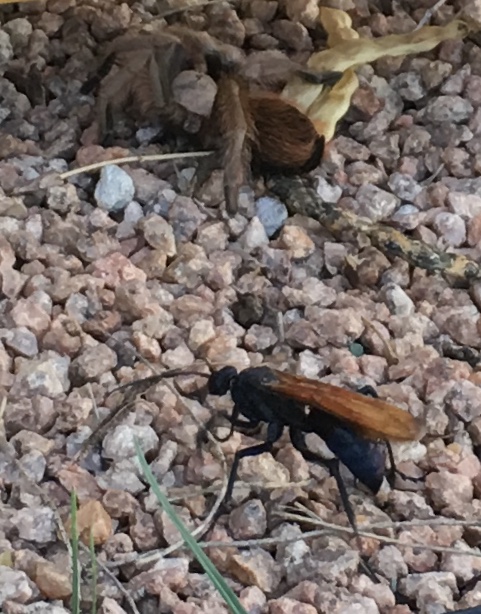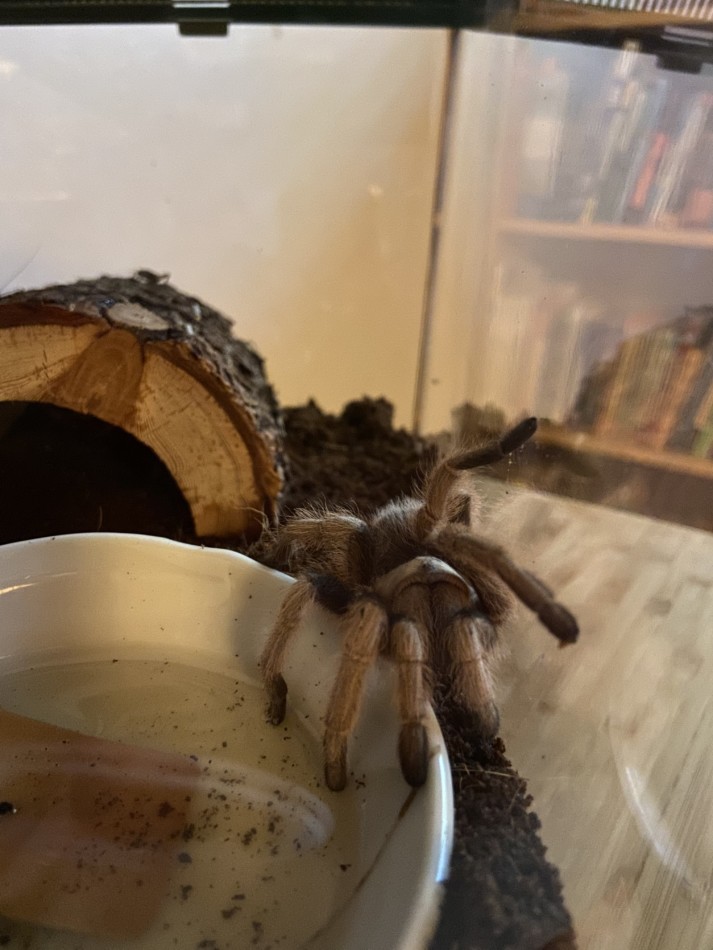On a warm September evening near Saguaro National Park in Tucson, I arrived home and stumbled upon a tarantula hawk circling around a small, female desert blonde tarantula that it had just paralyzed. Notorious for having one of the world’s most painful stings for humans, tarantula hawks must paralyze a tarantula to complete its lifecycle. The female wasp drags the immobilized spider back to its burrow to lay an egg and the tarantula hawk offspring parasitize the incapacitated tarantula until they reach maturity, leaving the burrow and killing the host in the process.

The desert blonde tarantula (Aphonopelma chalcodes) is a large and calm charismatic spider native to the Saguaro cactus forest of Arizona. Its body can reach 3-4 inches in length and it lives alone in belowground burrows. Females can live more than 20 years and the males 5-8.
The paralyzed tarantula I found on September 4, 2019, sat motionless while the wasp circled around it. Either unable or unwilling to carry the spider away, eventually I saw the tarantula hawk fly off into the desert alone. I watched and wondered about the abandoned tarantula through the evening and in the morning I decided to bring the docile creature inside to see if it could survive and recover from her paralysis. Could this horror story possibly have a happy ending?
 The moment Emily Burns, Program Director, encountered a tarantula hawk encircling its paralyzed victim.
The moment Emily Burns, Program Director, encountered a tarantula hawk encircling its paralyzed victim.
Several hydrating baths and 40 days later, my rescued tarantula begin to move. She began to slowly roam around her enclosure, helping herself to the occasional bath and climbing on top of her log den. She is truly an amazingly resilient creature and if she continues to gain strength, I look forward to releasing her back into her desert home. Until that season comes, I’m excited to watch the story of her recovery unfold.
 A few days into her recovery, Tarantula Tess relaxes poolside.
A few days into her recovery, Tarantula Tess relaxes poolside.
Learn more about the amazing species that call the Sky Islands home by visiting our Species Gallery.
